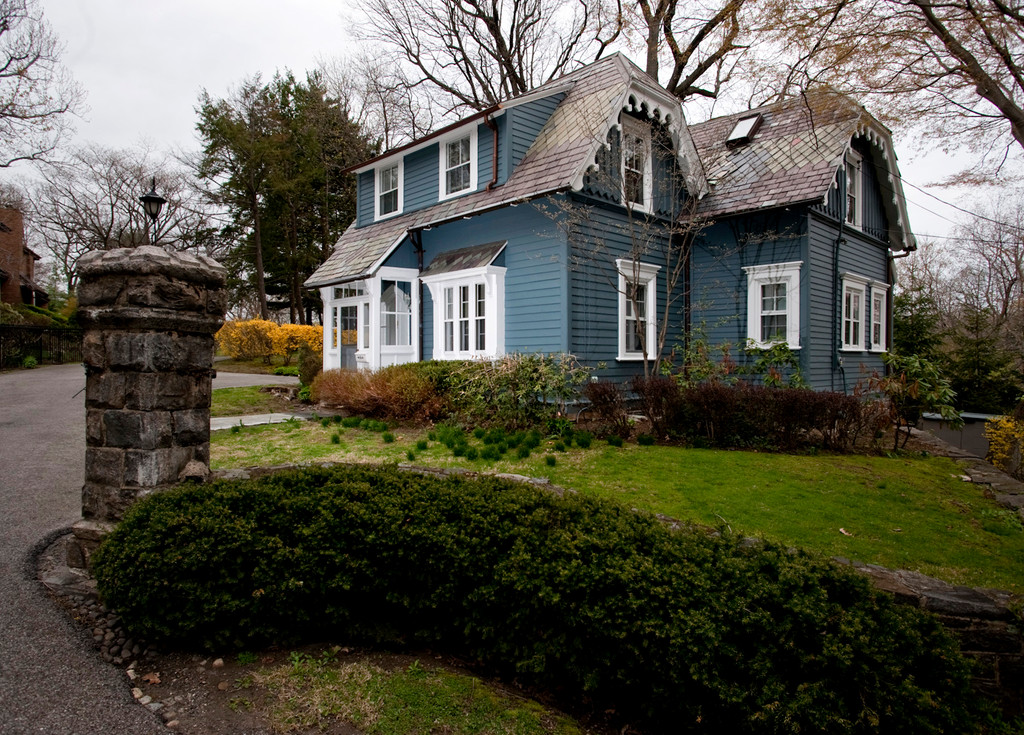Greyston Gatehouse achieves landmark status
Grand was a word James Renwick, Jr. was very familiar with. He designed St. Patrick’s Cathedral on Fifth Avenue, the Smithsonian Institution on the mall in Washington, D.C. and Greyston, the magnificent seat of the Dodge family, overlooking the Hudson River in Riverdale.
But one look at the Greyston Gatehouse, completed in 1868 at the northeast corner of the estate belonging to William E. Dodge, Jr. and Sarah T. Hoadley Dodge, reveals that the architect was equally adept at intimate, charming and diminutive.
Greyston’s gray granite mansion has long been recognized as a landmark. Last month the one-and-a-half story cottage at 4695 Independence Ave., which stood guard at the entrance to the estate, was finally given its due. It was approved as a city landmark by the Landmarks Preservation Commission. Now, it only needs to be approved by the City Council.
Mr. Dodge and his wife, Ms. Hoadley Dodge, purchased the 6.3-acre tract of land for $12,760 in January 1863. Mr. Dodge’s father, William E., Sr. co-founded Phelps, Dodge & Co., which made a fortune exporting cotton and importing metals.
The company’s Ansonia Manufacturing Co. made kettles, lamps and buttons, which were sold to miners during the California Gold Rush and sold copper wire when the telegraph was invented.
The elder Dodge was also one of the founders of the Young Men’s Christian Association (YMCA). Later, the younger Dodge was a president of the YMCA and ran Phelps, Dodge & Co. after Mr. Dodge Sr. retired in 1881.
When the Dodges moved to the Riverdale area in 1863, it had become popular as a summer retreat for the wealthy.
No documents exist to prove that the gatehouse is Mr. Renwick’s work, but historians have attributed it to him because of his close ties to the Dodge family and also because the mansion and the gatehouse both have jerkinhead gables — their end walls have gables that begin as simple triangles, but near the peak they are raked back, creating a tilted, shingled triangle at the top.
In addition, Mr. Dodge was one of the five founders of the Riverdale Presbyterian Church, another of Mr. Renwick’s designs.
“The one-and-a-half story frame Gatehouse building is irregularly massed, clad in clapboards in the first story and board-and-batten above, and features cusped vergeboards accenting the jerkinhead roofs, which are covered with polychrome slate shingles, with sections set in a diamond pattern,” reads commission staffer Jay Shockley’s report on the newly designated landmark.
The Dodge mansion was named a city landmark in 1970, but the gatehouse was not included in that landmarking. By that time, the estate, like many others on the ridge overlooking the Hudson, had been subdivided and it was dotted with newer homes.
Bronx Borough Historian Lloyd Ultan said many buildings like the gatehouse no longer exist.
“The very fact that one of these gatehouses has survived after all these years is significant, especially when the estate is divided up, there’s usually no reason to have the gatehouse, most were destroyed,” he said.
The gatehouse provided a home for the estate’s caretaker. Among his duties, Mr. Ultan said, would also be the job of monitoring admission to the property. Next to the small blue house are two granite piers, which presumably once held a gate, attached to a wall.
The gatehouse is currently owned by the Cleveland H. Dodge Foundation and once housed its operations. The foundation’s generosity continues to fund local institutions like Riverdale Neighborhood House — which was founded by the Dodges — Wave Hill and the New York Botanical Garden, though it has been years since any members of the Dodge family have lived there.






